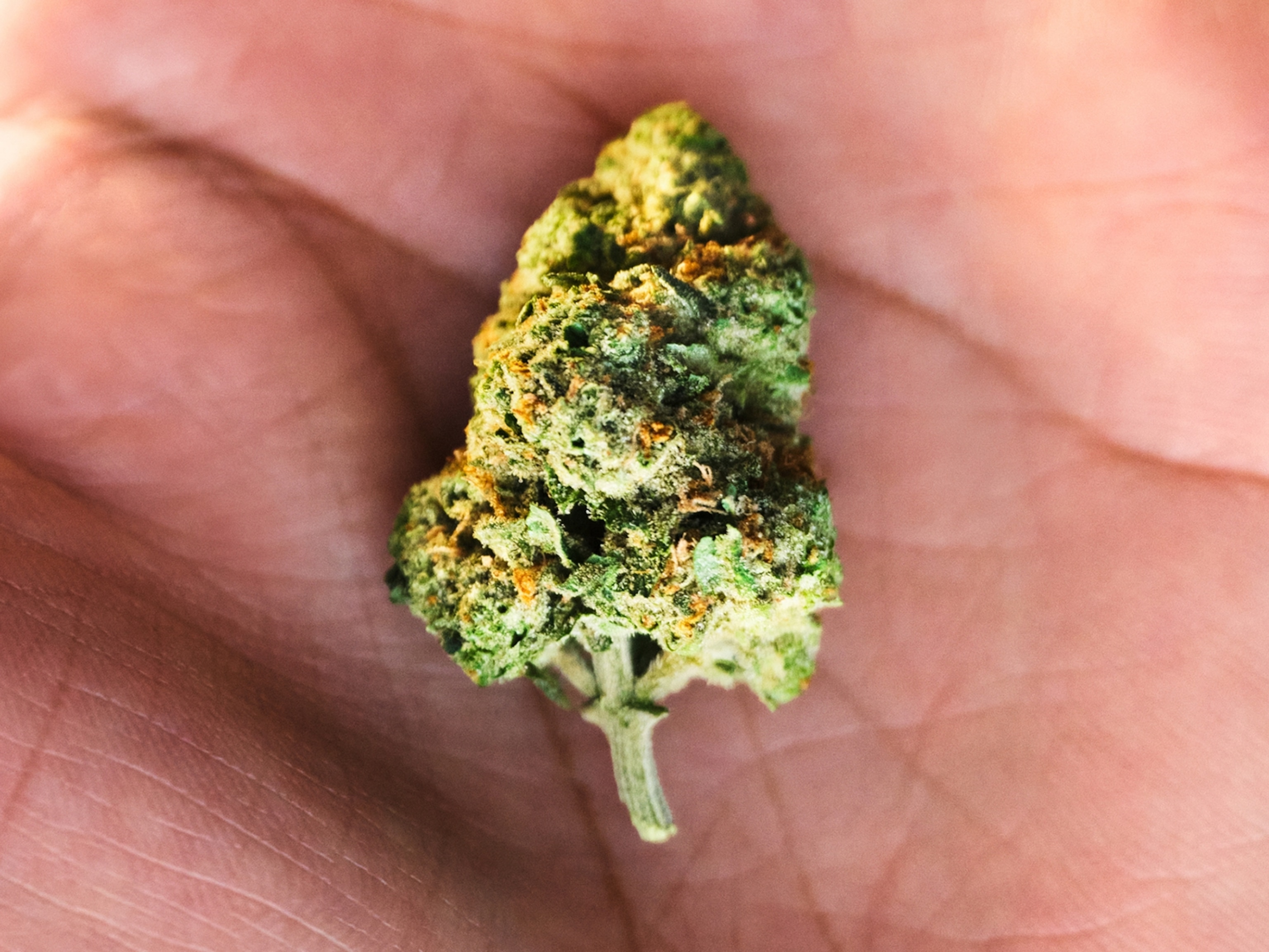
What’s Best for Baby’s Tummy? The History of Baby Food
Most parents—whether for sentimental reasons or hopes of future blackmail—have pictures of their babies with tomato sauce in their hair, clutching handfuls of spaghetti, or diving goo-ily into a one-candled birthday cake.
The food disaster photo is a standard feature of babyhood. It’s also, it turns out, pretty much emblematic of the way we’re now supposed to encourage babies to eat. Known as “baby-led weaning,” this practice holds that feeding babies—once they’re old enough to chew—is an activity best left to the babies themselves. And it’s all about fingers, rather than spoons and commercial baby food.
Baby food came about because infants couldn’t always be supplied with breast milk. The earliest of artificial baby foods were milk substitutes, desperate alternatives for milk-less mothers or mother-less babies. Primitive baby bottles date back at least 2,000 years. These were oblong clay vessels with spouts, sometimes sadly found in infant graves. (They baffled archaeologists, who identified them as containers for filling oil lamps until analyses of residues showed that they had contained milk.) Common substitutes for mother’s milk were animal milks, usually from cows, sheep, or goats.
Milk substitutes and supplements, until the mid-19th century, were concocted at home in the family kitchen. A standard brew, dating at least to the Middle Ages, was pap, a slurry of bread or flour in water, fed to babies from pap boats, ceramic containers that looked like miniature gravy boats. Sometimes pap was beefed up with sugar, beer, wine, meat broth, or, in the case of fussy and disruptive babies, opium.
Recipes for baby foods were found in early cookbooks lumped together with invalid foods, since both, ideally, were bland, soupy, and easy to digest. Sarah Josepha Hale—author of “Mary Had a Little Lamb” and prime promoter of Thanksgiving as a national holiday—included a chapter on “Cookery for Children” in her Ladies’ New Book of Cookery (1852). She recommended cow’s milk with sugar as food for infants and, for older babies, gruels, beef tea, and stale bread, boiled in water. “Mild farinaceous vegetable preparations” were staples until the age of three. Vegetables were boiled to mush and served plain, though, if the little one is “flatulent or bilious,” Hale suggested adding a dash of curry powder.
The Rise of Commercial Infant Formula
The jump from homestyle to commercial infant formulas and baby foods resulted from the Industrial Revolution and its technological advances in food preservation. In the 1860s, German chemist Justus von Liebig—father of five, best known for his invention of nitrogen-based chemical fertilizers—came up with Liebig’s Soluble Food for Babies. Intended to simulate mother’s milk, this was a mix of cow’s milk, potassium bicarbonate, and wheat and malt flours, dried and sold as a powder. Hot on von Liebig’s heels, Swiss entrepreneur Henri Nestlé came up with a mix of wheat rusk crumbs mixed with sweetened condensed milk. Dubbed Nestlé’s Milk Food, this was promoted as “better than milk.” An ad of the 1880s, quoted in Amy Bentley’s comprehensive history Inventing Baby Food (2014), reads:
There was an old woman who lived in a shoe
She had so many children, she knew not what to do
Some she nursed, and some bottle fed
But those raised on NESTLÉ’S FOOD
Came out far ahead.
Milk Substitutes Sometimes Fatal for Infants
Actually, babies raised on the new milk substitutes came out far behind. Until the discovery of vitamins in the 20th century, the substitutes inevitably lacked crucial nutrients, and most had to be mixed with milk, which—until the advent of pasteurization—was often contaminated or spoiled. One source estimates that in the 19th century a third or more of artificially fed infants died.
The big sell on baby food, however, began in the 1920s; and it’s a tribute to the power of advertising that canned strained peas and pureed prunes sold steadily throughout the Depression, when nobody had much cash to spare. Among the earliest and most successful of baby food purveyors were Frank and Daniel Gerber of Fremont, Michigan, who tested their first batches of slurpy fruits and vegetables on Daniel’s baby daughter, Sally. By 1930, the Gerber plant was turning out an annual 842,000 cans of baby food; one year later, production had jumped to over 2 million annual cans.
Gerber labeled its products with pictures of the Gerber baby—an advertising icon now recognized worldwide—an enchanting cherub once rumored to be an infant Humphrey Bogart or Elizabeth Taylor. Gerber stayed mum about the baby’s identity for 40 years, finally admitting that the famous face was that of mystery novelist Ann Turner Cook, who in babyhood lived next door to artist Dorothy Hope Smith, who did the original sketch.
By the 1950s, egged on by persistent marketers and supported by pediatricians, 90 percent of American parents fed their babies commercial baby food, which was quick, convenient, and ready to eat straight from the can (or, as of 1977, jar). By 2002, the figure was 99 percent; and today, baby food is a multibillion-dollar global business. The average American baby, one recent study found, consumes 600 jars of commercial baby food by the time he or she is a year old.
In the 1987 movie Baby Boom, Diane Keaton—as power-executive-turned-mom J.C. Wiatt—moves to Vermont with her adopted baby daughter, Elizabeth, and starts a homemade baby food business. It’s a good move in more ways than one: Keaton makes money and meets a dishy country veterinarian (Sam Shepard), and Elizabeth gets healthy food.
In light of recent research, Elizabeth’s homemade applesauce may well be the wave of the baby-food future. Increasing numbers of parents now worry about additives in processed baby foods, such as sugar, salt, and preservatives, or contaminants such as pesticides. Homemade baby food, considered in the ’50s and ’60s to be old-fashioned, work-intensive, and possibly unsanitary, is making a comeback. The DIY versions are now perceived as wholesome, natural, environmentally friendly, and socially admirable. Good moms mash their own organic broccoli.
Breast Milk is the Best Milk
Dozens of cookbook authors and celebrity chefs have leaped on the baby food bandwagon. Tyler Florence, star of the Food Network’s How to Boil Water and Food 911, has invented a whole line of organic baby foods (think banana and brown rice puree, with cinnamon); and chef and food writer Anthony Bourdain reportedly treated his baby daughter to such homemade gourmet meals as nettle risotto with pecorino cheese. Bland is no longer thought to be better; instead, experts suggest that varieties of flavorful and colorful foods encourage babies to grow up to be adventurous adult eaters.
No matter how tempting, however, the American Academy of Pediatrics recommends that parents lay off solid baby food, at least for the baby’s first 6 months of life. Instead, during that first half year, the Academy pushes for exclusive breastfeeding, which confers a multitude of benefits beyond just plain food. Milk is a complex mix of proteins, sugars, fatty acids, vitamins, minerals, and hundreds—even thousands—of bioactive molecules, such as antibodies, growth factors, and hormones. It also contains a host of helpful maternal cells and factors that pump up the infant immune system, and a menagerie of friendly microbes that eventually set up housekeeping in babies’ guts and helps them digest food. Some evidence suggests that milk even acts as a pheromone, a chemical signal between mother and baby, that affects babies’ behaviors and temperaments.
Despite this milk-only advice, a 2013 survey conducted by the Centers for Disease Control and Prevention found that many American babies are getting too much solid food, too soon. About 40 percent of parents started their babies on solid food before the age of four months, and 9 percent, as early as four weeks. A spate of new studies indicates that feeding kids solid food, especially at very early ages, is a no-no, leading in later life to higher incidences of obesity, diabetes, and gastrointestinal problems. The persistence of early solid food introduction, pediatricians guess, is the time-honored belief that a tummy full of cereal and creamed carrots helps babies sleep through the night. (It doesn’t.)
Once babies are really ready for solid food, baby-led-weaning advocates suggest, rather than spoon them full of processed puree, it may be best to give the kids an array of nutritious finger foods and let them feed themselves. Research indicates that kids allowed to eat in this manner have healthier diets, consume fewer calories, and are more likely to maintain appropriate weights in later life.
Obesity is presently epidemic in the United States. One out of every three adults is clinically obese, as are 17 percent of children and teenagers, and 12 percent of kids ages 2-5—this last figure double what it was 30 years ago. According to the 2008 Feeding of Infants and Toddlers Study (FITS), a third of kids get no fruit daily, and among babies and toddlers, the most commonly consumed vegetable is the French fry. It’s time for something completely different. Even in this age of budgetary cutbacks, we need to put more money and thought into giving our babies a healthy start.
References
- Bentley, Amy. Inventing Baby Food. University of California Press, 2014.
- Hinde, Katie, Amy L. Skibiel, Alison B. Foster, Laura Del Rosso, Sally P. Mendoza, and John P. Capitanio. “Cortisol in mother’s milk across lactation reflects maternal life history and predicts infant temperament.” Behavioral Ecology, October 2014.
- Lepore, Jill. “Baby Food.” New Yorker, 19 January 2009.
- Stevens, Emily, Thelma E. Patrick, and Rita Pickler. “A History of Infant Feeding.” Journal of Perinatal Education, Spring 2009, pp. 32-39.








